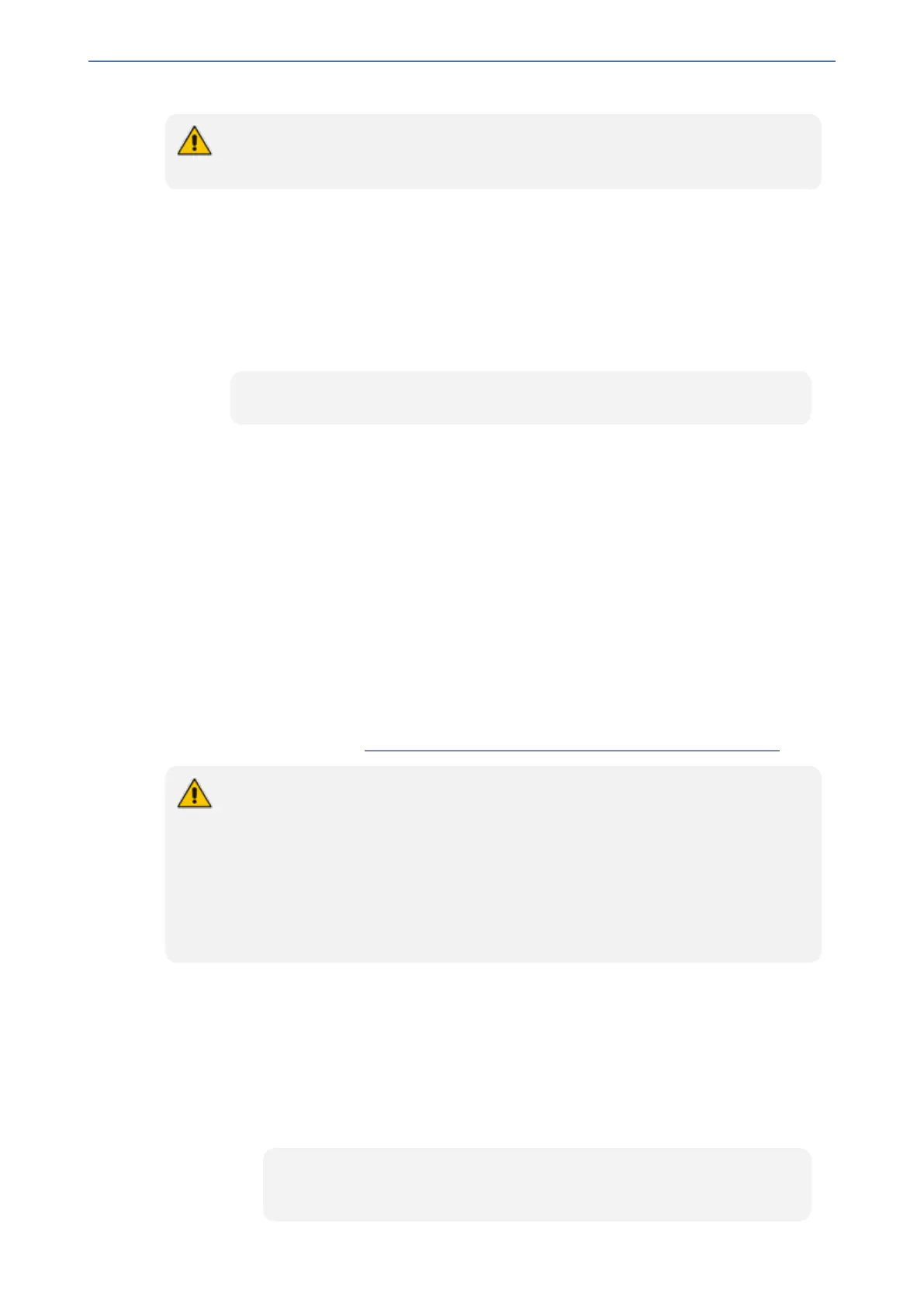CHAPTER47 Automatic Provisioning
Mediant 1000 Gateway & E-SBC | User's Manual
If you configure the [AupdHttpUserAgent] parameter with the <CONF> variable tag,
you must reset the device with a save-to-flash for your settings to take effect.
4. If the provisioning server has relevant files available for the device, the following occurs,
depending on file type and configuration:
● File Download upon each Automatic Update process: This is applicable to software
(.cmp) and configuration files.In the sent HTTP Get request, the device uses the HTTP If-
Modified-Since header to determine whether to download these files. The header contains
the date and time (timestamp) of when the device last downloaded the file from the
specific URL. This date and time is regardless of whether the file was installed or not on
the device. An example of an If-Modified-Since header is shown below:
If-Modified-Since: Mon, 1 January 2014 19:43:31 GMT
If the file on the provisioning server was unchanged (not modified) since the date and time
specified in the header, the server replies with an HTTP 304 response and the file is not
downloaded. If the file was modified, the provisioning server sends an HTTP 200 OK
response with the file in the body of the HTTP response. The device downloads the file and
compares the version of the file with the currently installed version on its flash memory. If
the downloaded file is of a later version, the device installs it after the device resets (which
is only done after the device completes all file downloads); otherwise, the device does not
reset and does not install the file.
To enable the automatic software (.cmp) file download method based on this timestamp
method, use the [AutoCmpFileUrl] parameter or CLI command configure system >
automatic-update > auto-firmware <URL>. The device uses the same
configured URL to download the .cmp file for each subsequent Automatic Update process.
You can also enable the device to run a CRC on the downloaded configuration file to
determine whether the file has changed in comparison to the previously downloaded file.
Depending on the CRC result, the device can install or discard the downloaded file. For
more information, see Cyclic Redundancy Check on Downloaded Configuration Files.
● When this method is used, there is typically no need for the provisioning server to
check the device’s current firmware version using the HTTP-User-Agent header.
● The Automatic Update feature assumes that the Web server conforms to the HTTP
standard. If the Web server ignores the If-Modified-Since header or doesn’t provide
the current date and time during the HTTP 200 OK response, the device may reset
itself repeatedly. To overcome this problem, modify the update frequency, using
the [AutoUpdateFrequency] parameter or CLI command configure system >
automatic update > update-frequency.
● One-time File Download: This is applicable to software (.cmp) and Auxiliary (e.g.,
License Key, CPT and Dial Plan) files. The device downloads these files only once,
regardless of how many times the device may repeat the Automatic Update process.
Once they are downloaded, the device discards their configured URLs. To update these
files again, you need to configure their URL addresses and filenames again. Below is an
example of how to configure URLs for some of these files:
Auxiliary Files:
◆ ini:
CptFileURL = 'https://www.company.com/call_progress.dat'
FeatureKeyURL = 'https://www.company.com/License_Key.txt'
- 899 -

